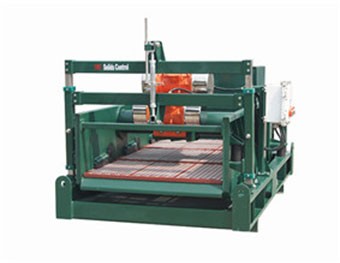The Solid Bowl Decanter Centrifuge An Overview
The solid bowl decanter centrifuge is an advanced piece of separation equipment widely used in various industrial sectors, including wastewater treatment, food processing, chemical manufacturing, and oil and gas industries. Its primary function is to separate solid particles from liquids, utilizing centrifugal force for enhanced separation efficiency. This technology plays a critical role in improving production quality and reducing operational costs.
Principles of Operation
The solid bowl decanter centrifuge operates on a principle that combines sedimentation and centrifugal force. When a mixture of solid and liquid is introduced into the centrifuge, the high rotational speed generates a substantial centrifugal force that causes the denser solids to move outward toward the bowl wall, while the lighter liquids remain closer to the center. The bowl\'s design, which is typically conical or cylindrical, ensures that the solids are continuously moved towards the discharge end as new feed is introduced.
This process begins with the feed entering the centrifuge\'s bowl through a feed inlet. The centrifugal force generated by the spinning bowl causes the solid particles to settle rapidly at the outer wall of the bowl. The decanter then has separate outlets for the liquid phase and the solid phase. The clarified liquid, which has been effectively separated from the solids, can be discharged from the center of the bowl, while the concentrated solids are pushed towards the discharge end, where they are expelled either intermittently or continuously, depending on the design and application.
Advantages of Solid Bowl Decanter Centrifuges
1. High Efficiency The solid bowl decanter centrifuge is capable of achieving higher separation efficiencies compared to traditional sedimentation methods. The centrifugal force allows for faster settling of solids, resulting in a clearer liquid and a drier solid cake.
2. Versatility These centrifuges can handle a wide range of particulate sizes and densities, making them suitable for various applications. They can process everything from heavy sludges in wastewater treatment to fine particles in food processing.
3. Continuous Operation Unlike batch processes, solid bowl decanter centrifuges often operate in a continuous mode, which enhances productivity. This feature is especially beneficial in large-scale operations requiring constant throughput.
4. Reduced Footprint Centrifuges typically require less floor space than traditional sedimentation tanks, making them an attractive option for facilities with limited space.
solid bowl decanter centrifuge
5. Automated Control Many modern solid bowl decanter centrifuges come equipped with advanced monitoring and control systems. These systems can optimize performance by adjusting parameters such as speed, feed rate, and discharge frequency in real time.
Applications
The applications of solid bowl decanter centrifuges are varied and widespread. In the wastewater treatment industry, they are used to separate sludge from water effectively, ensuring compliance with environmental regulations before discharge. In the food industry, these centrifuges can clarify juice and separate oils from solids, preserving product quality and extending shelf-life.
In the chemical sector, solid bowl decanter centrifuges assist in the separation of catalysts and other particulates from process streams. Similarly, in the oil and gas industry, they play a vital role in separating oil, water, and solids from drilling fluids, thus enhancing operational efficiency and reducing environmental impact.
Challenges and Considerations
While solid bowl decanter centrifuges offer numerous advantages, there are challenges to consider. Proper maintenance is crucial to prevent wear and tear, as the high speeds involved can lead to mechanical failures if not monitored. Granule size and concentration of solids in the feed can also affect performance, necessitating adjustments in operational parameters.
Additionally, the initial investment cost for these sophisticated machines can be higher than traditional methods, though the long-term savings in operational efficiency often justify this expenditure.
Conclusion
The solid bowl decanter centrifuge stands as a hallmark of modern separation technology, merging efficiency with versatility. It not only enhances the quality of products across various industries but also aligns with sustainable practices by optimizing resource recovery and minimizing waste. As industries continue to evolve and seek more efficient separation solutions, the solid bowl decanter centrifuge will undoubtedly remain a vital component of production processes across the globe.
 Linear Motion Shale Shaker In Drilling Rig
Linear Motion Shale Shaker In Drilling Rig  Oilfield Mud Cleaner
Oilfield Mud Cleaner  Drilling Fluid Decanter Centrifuge
Drilling Fluid Decanter Centrifuge  Drilling Mud Desander
Drilling Mud Desander  Hydrocyclone Desilter
Hydrocyclone Desilter  Centrifugal Pump/Centrifugal Mud Pump
Centrifugal Pump/Centrifugal Mud Pump  Shear Pump
Shear Pump  Jet Mud Mixer
Jet Mud Mixer  Horizontal Mud Agitator
Horizontal Mud Agitator  Constant Pressure Drilling Fluid Mud Gas Separator
Constant Pressure Drilling Fluid Mud Gas Separator  Mud Gun
Mud Gun  Mud Tank
Mud Tank  Solids Control System Vacuum Degasser
Solids Control System Vacuum Degasser  Flare Ignition Device
Flare Ignition Device  Diesel Tank
Diesel Tank  Submersible Slurry Pump
Submersible Slurry Pump 






































